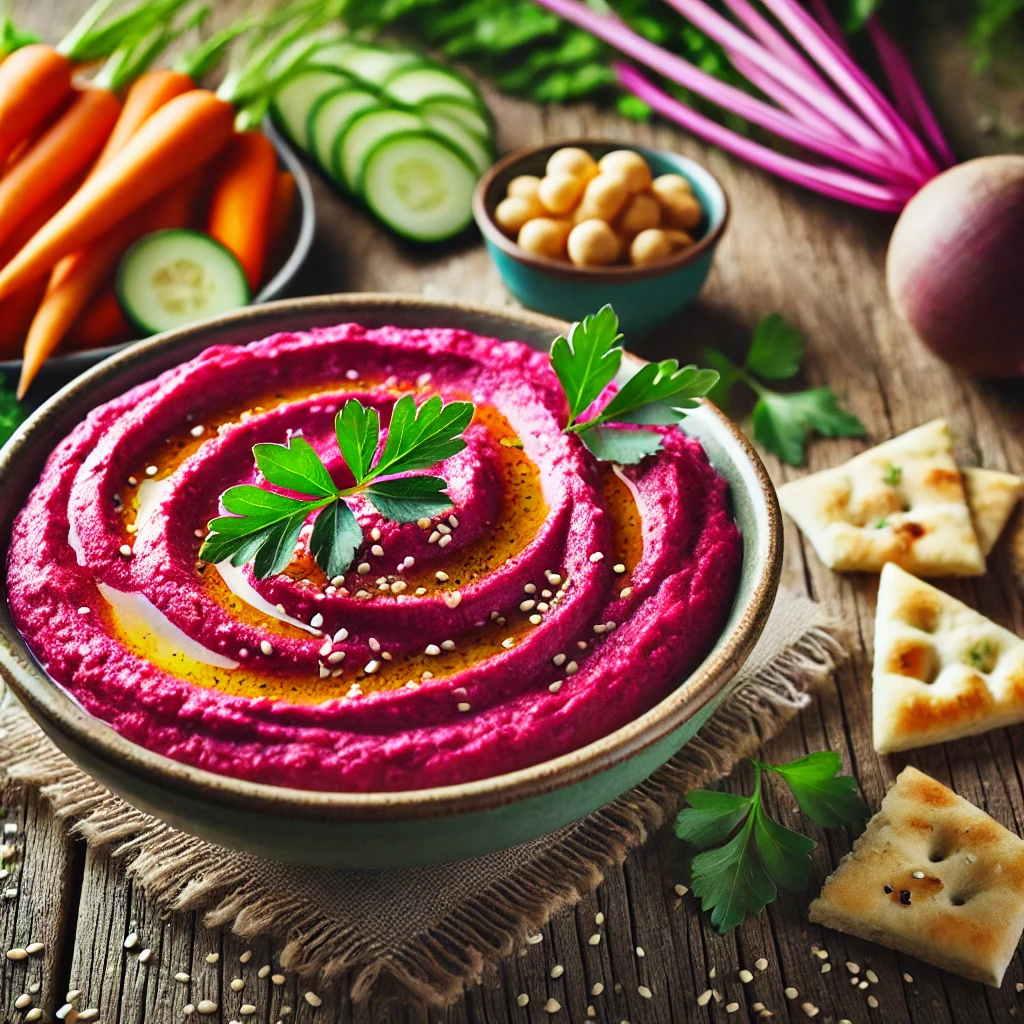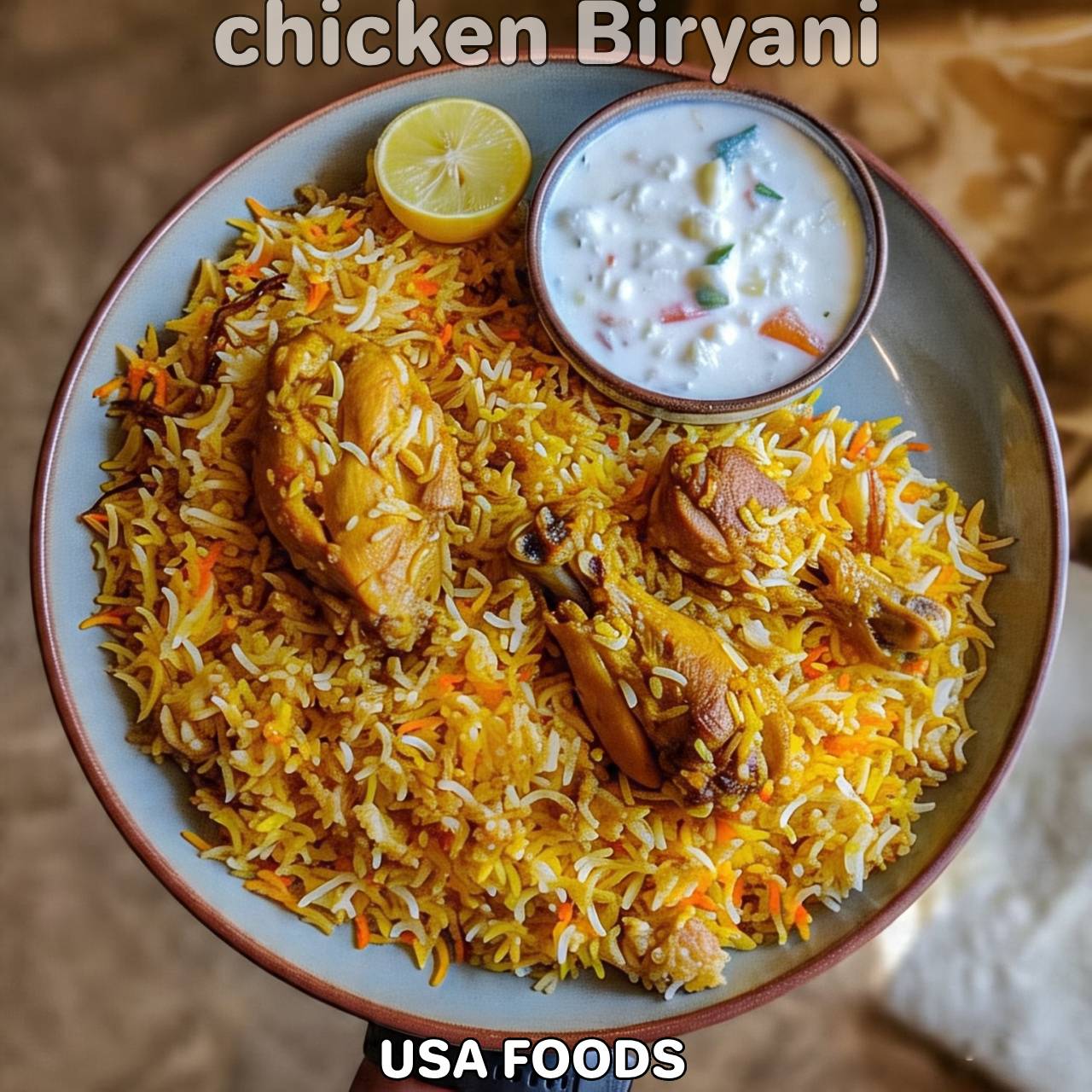Beetroot hummus has rapidly gained popularity among health enthusiasts, food bloggers, and home cooks around the world. With its vibrant pink hue, earthy flavor, and nutrient-rich profile, beetroot hummus is much more than just a pretty dip. It is a nutritional powerhouse that brings color, flavor, and health benefits to your plate. Whether you are a hummus lover looking for something new or someone seeking healthy snack options, beetroot hummus is a delightful addition to your diet. In this article, we will explore the origins of hummus, the benefits of beetroot, how to make beetroot hummus at home, and creative ways to enjoy it.
Table of Contents
What Is Beetroot Hummus?
This is a variation of traditional hummus that incorporates roasted or boiled beetroot into the classic recipe. Traditional hummus originates from the Middle East and Mediterranean regions and is made using chickpeas (also known as garbanzo beans), tahini (sesame paste), olive oil, lemon juice, garlic, and salt. Beetroot hummus follows the same basic recipe but adds cooked beetroot for a distinctive flavor, vibrant color, and an extra dose of nutrients.
The result is a creamy, slightly sweet, and earthy dip that can be enjoyed as a snack, appetizer, or side dish. Not only does beetroot hummus taste delicious, but its stunning magenta color also makes it a showstopper at parties and gatherings.
Nutritional Benefits of B.H
Beetroot hummus is not just a tasty dip; it is packed with nutrients that offer a wide array of health benefits. The combination of chickpeas and beetroot creates a nutrient-dense dish that is rich in protein, fiber, vitamins, and minerals. Let’s take a closer look at the health benefits of beetroot hummus.
1. Rich in Nutrients
These are an excellent source of essential vitamins and minerals. They are high in folate (vitamin B9), manganese, potassium, iron, and vitamin C. Chickpeas are loaded with plant-based protein, fiber, iron, and magnesium. Tahini adds calcium and healthy fats, while olive oil provides heart-healthy monounsaturated fats.
2. Supports Heart Health
are known for their high nitrate content, which can help lower blood pressure and improve heart health. Nitrates are converted into nitric oxide in the body, which helps dilate blood vessels, enhancing blood flow and reducing blood pressure levels.
3. Boosts Digestive Health
Both beetroot and chickpeas are high in dietary fiber, which promotes healthy digestion. Fiber helps maintain bowel regularity, prevents constipation, and supports a healthy gut microbiome.
4. Enhances Exercise Performance
Beetroot has been shown to improve athletic performance due to its nitrate content. Nitric oxide can increase oxygen delivery to muscles, improving endurance and reducing fatigue during exercise.
5. Supports Detoxification
Beetroot is a natural detoxifier, helping to cleanse the liver and promote the elimination of toxins from the body. It contains compounds called betalains, which have antioxidant and anti-inflammatory properties.
6. High in Antioxidants
Beetroot contains powerful antioxidants, including betalains and vitamin C, that help neutralize harmful free radicals in the body. This reduces oxidative stress and supports overall health.
7. Good for Weight Management
It is low in calories and high in fiber and protein, making it a satisfying and nutritious snack. It helps keep you full for longer, reducing the likelihood of overeating.
How to Make B.H at Home
Making B.H at home is simple, cost-effective, and allows you to control the ingredients to suit your taste preferences and dietary needs. Below is a step-by-step recipe to create creamy, flavorful beetroot hummus.
Ingredients:
- 1 medium beetroot (roasted or boiled)
- 1 ½ cups cooked chickpeas (or one 400g can, drained and rinsed)
- 3 tablespoons tahini
- 2 tablespoons olive oil (plus extra for drizzling)
- 2 tablespoons fresh lemon juice
- 1 clove garlic (adjust to taste)
- ½ teaspoon ground cumin (optional)
- Salt to taste
- Water (as needed for desired consistency)
Optional Toppings:
- Sesame seeds
- Chopped parsley
- Crumbled feta cheese
- Toasted pine nuts
- A drizzle of olive oil
Instructions:
- Prepare the Beetroot:
Start by washing and trimming the beetroot. You can either roast it in the oven at 200°C (400°F) for about 40-50 minutes or boil it until tender (about 30 minutes). Once cooked and cooled, peel the beetroot and cut it into chunks. - Blend the Ingredients:
In a food processor or high-speed blender, add the cooked beetroot, chickpeas, tahini, lemon juice, garlic, cumin, and a pinch of salt. Blend until the mixture starts to come together. - Add Olive Oil and Water:
While blending, slowly drizzle in the olive oil. If the hummus is too thick, add water a tablespoon at a time until you achieve your desired consistency. Blend until smooth and creamy. - Taste and Adjust:
Taste the hummus and adjust the seasoning as needed. You may want to add more lemon juice, garlic, or salt to suit your preference. - Serve and Garnish:
Transfer the beetroot hummus to a serving bowl. Use the back of a spoon to create a swirl on the surface and drizzle with extra olive oil. Garnish with sesame seeds, parsley, or your favorite toppings. - Enjoy:
Serve beetroot hummus with pita bread, vegetable sticks, crackers, or as a spread in sandwiches and wraps.
Tips for the Best B.H
- Use Fresh Beetroot:
Roasting beetroot intensifies its flavor and sweetness, but boiling works well if you’re short on time. Fresh beetroot offers better flavor and color than pre-cooked or canned varieties. - Balance Flavors:
Taste as you go. Beetroot has a natural sweetness that you can balance with the acidity of lemon juice and the savory flavor of tahini and garlic. - Texture Matters:
For extra smooth hummus, peel the chickpeas before blending. It’s a bit time-consuming but results in a silkier dip. - Storage:
Store B.H in an airtight container in the refrigerator for up to 4-5 days. The color may darken slightly over time, but it will still taste delicious. - Freezing:
You can freeze beetroot hummus in portion-sized containers for up to three months. Thaw in the refrigerator and stir well before serving.
Variations of Beetroot Hummus
While the classic beetroot hummus recipe is delicious, you can get creative by adding different ingredients for new flavors and textures.
1. Spicy Beetroot Hummus
Add a pinch of cayenne pepper, red chili flakes, or a small piece of fresh chili for a spicy kick.
2. Herbed Beetroot Hummus
Blend in fresh herbs like mint, cilantro, or dill for a refreshing flavor.
3. Beetroot and Feta Hummus
Crumble in some feta cheese and blend for a creamy, tangy twist.
4. Beetroot and Walnut Hummus
Add toasted walnuts for a nutty flavor and extra richness.
5. Smoky Beetroot Hummus
Incorporate a dash of smoked paprika or roasted red peppers for a smoky flavor profile.
Creative Ways to Serve Beetroot Hummus
Beetroot hummus is versatile and can be enjoyed in many different ways beyond just a dip. Here are some creative serving ideas:
1. Dip for Crudités and Snacks
Serve beetroot hummus with an assortment of colorful raw vegetables such as carrots, cucumber, celery, bell peppers, and cherry tomatoes. It also pairs well with pita chips, tortilla chips, and rice crackers.
2. Spread for Sandwiches and Wraps
Use beetroot hummus as a healthy and flavorful spread in sandwiches, wraps, and burgers. It pairs wonderfully with roasted vegetables, grilled chicken, or falafel.
3. Topping for Salads and Grain Bowls
Add a dollop of beetroot hummus to salads and grain bowls for an extra boost of flavor and nutrition. It works particularly well with quinoa, bulgur, and couscous bowls.
4. Stuffed in Pita Bread
Fill pita bread pockets with beetroot hummus, greens, roasted veggies, and your choice of protein for a quick and satisfying meal.
5. As a Base for Mezze Platters
Include beetroot hummus as part of a mezze platter alongside traditional hummus, baba ganoush, tzatziki, olives, and fresh bread.
6. Healthy Snack for Kids
Kids love colorful foods! Offer beetroot hummus with veggie sticks or whole-grain crackers as a fun and nutritious snack.




